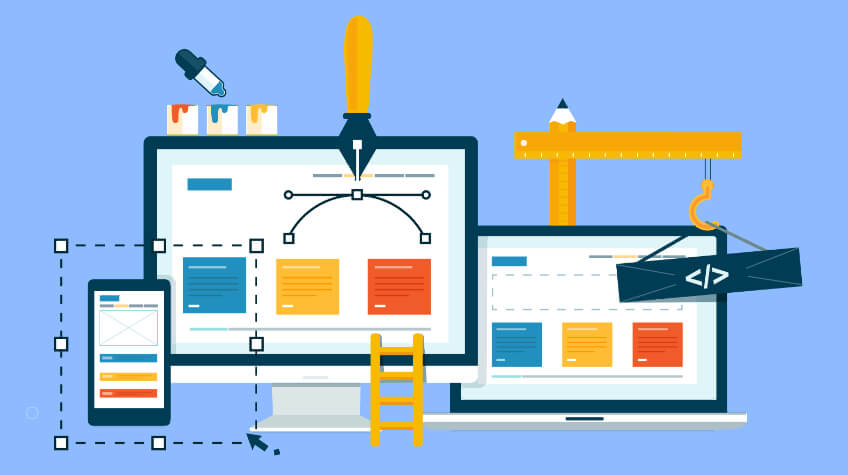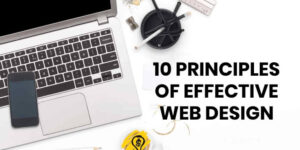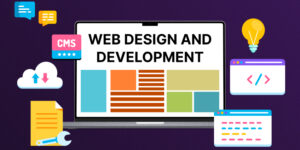
Web design may at times appear to be a form of alchemy, especially to those who are unfamiliar with the field. Beginners can usually tell what makes a good website, but they rarely come up with the perfect elixir from scratch.
As site designers toil over bubbling liquids, complicated tools, and the ever-tedious conversions between RGB colour codes and hex codes, they all strive to discover the enchanting mix that strikes the ideal balance between innovativeness, creativeness, and commercial acumen.
For the mad scientist, success represents a lifetime of glory and riches, while failure means a lifetime of frustration and endless experiments.
Unlocking a powerful design for your website, whether it’s brand new or already in existence, can feel like a mystical process of creation, combination, and transformation.
There is no shortage of professionally designed themes and templates for just about any conceivable business or artistic goal, but there always seems to be that one ingredient missing that just doesn’t quite make the alloy as powerful as you imagine it needs to be.
The layout of your website, much like the secret recipe for gold, is a difficult, enigmatic, and at times exasperating process; nonetheless, it is well worth the effort to get it just right.
The design of a modern website is comprised of more than simply visual aspects and aesthetically; it also affects your search engine optimization and rankings, drives how your audience thinks of your brand and affects the behaviours of your website’s users. The design and style of your website have an effect on your overall digital visibility.
There are a few fundamental recipes to adopt and resources to employ regardless of whether you are beginning from scratch, remodelling your eternal fixer-upper, or analysing an endless stream of templates. These recipes and ingredients are listed below.
In this section, we will discuss the fundamental components that, when applied in the correct proportions and way, have the potential to make your aspirations for your internet business and design a reality.
To Begin, You Should Take Care Of The Technical Stuff, Or Your Host Should Do It For You

You probably thought that selecting the appropriate colour palette and images was the most important part of designing a website. You are not entirely incorrect, to put it that way.
It doesn’t matter if your website has the most beautiful design in the world if people can’t access it or don’t stay long enough to sell if they do. Consumers of the internet, regardless of their demographics, seem to be a somewhat impatient bunch.
Roughly one-third of internet users anticipate a website to load in one second or less, and over half anticipate a website to load within 3 seconds. Your chances of permanently losing that user or buyer increase with every millisecond that passes beyond that point.
The exact same thing is true for web pages that never load at all.
According to research conducted by the Ponemon Institute, disruptions at a company’s data centre can cost an average of $9,000 for each minute that the company’s website is inaccessible. If it takes a website more than 5 seconds to load, close to seventy-five percent of visitors will leave the site.
Signing up with a reputable web hosting service is the best way to eliminate all of these pain points without having to deal with any hassles or problems.
The 10 Components Of A Website’s Design That Are Considered To Be The Most Important

If you are the owner of a company, your website is without a doubt one of the most significant tools in your armoury, as it can help you acquire more clients and consumers that are of a higher quality.
The question then becomes, what distinguishes a good website from a bad website, or a good website from a terrific website?
Here are ten characteristics that must be present in a fantastic website. Regardless of whether or not you decide to keep the make space!
Navigation
The layout of the website should make it simple to navigate, and each of the menu items should be reachable from any page on the site. The viewer should always be aware of exactly where they are on the website and have uncomplicated access to wherever else on the site that they would want to go.
One is recommended to utilise a site map, and one will be used if it is available. Although it may seem obvious, the majority of websites have room for improvement in this regard.
It is important to keep in mind that there is a thin line between an interactive menu and one that is unpleasant, so the focus should be on usefulness.
Visual Design
People are visual animals, therefore making use of excellent visuals is a wonderful method to make your website more engaging to visitors.
In that split second, you need to convince your visitor (and possible buyer) that your site (and, by extension, your company) is credible and well-run. Having said that, it’s essential to remember not to go excessive with too much.
If you want to get the most out of your website design, you should utilise scrolling text, motion, and flash introductions sparingly and only when necessary to stress a point.
Content
Your website cannot function properly without this. Not only does the content of your website have a significant impact on where it is positioned in search engine results, but it is also the primary thing that most visitors to your site are looking for.
Your website’s material ought to be useful, user-friendly, and brief all at the same time.
Your website’s design is the single most important factor in determining whether or not it will be successful in attracting visitors, keeping their attention, and earning their business.
Web Friendly
It doesn’t matter how attractive, informative, or user-friendly the design of your website is if it isn’t optimised for the web, it will be useless.
It is essential that the web designers you hire are well-versed in search engine optimization, make use of meta tags and alt tags, and are familiar with all of the major browsers so that your website may be viewed by as many people as possible..
There are many aspects that affect the positioning of your website in search engines as well as the visual appearance of your website; therefore, you should make sure that your web designers know their business.
Related Post: 9 Must-Have Features Of a User-Friendly Website
Interaction
A website design that is actually effective engages your visitors right away, keeps them interested throughout EVERY page of the site, and convinces them to get in touch with you.
This is referred to as a “conversion,” and it is most likely the ultimate goal of your website.
Again, there is a thin border between “interaction” and “annoyance,” thus the level of engagement should never exceed the benefit. However, there is a fine line between “interaction” and “annoyance.”
Availability of Access to Information
Your website receives a lot of traffic, but not all of those people have the time or interest to look through the whole site. It’s possible that all of the information they require is only a phone number, an address, or a specific piece of data.
For this reason, it is essential to put critical information in a location where it can be quickly accessed and seen by a large number of people.
We have all had the misfortune of being unable to access some important information on a website, and the outcome is always a frustrated visitor. This is something that we have all experienced.
The experience is, at best, vexing, and a dissatisfied visitor won’t stick around on your website for very long, and it’s quite unlikely that they will ever return, much less conduct business with you.
Intuitiveness
A good website knows what its visitors are thinking, caters directly to those thoughts and desires, and organises its components in a way that makes sense.
If someone finds your site through a search engine or directories in which you have a listing for one of your goods or services, you want to make sure that the first page they get on is pertinent to their needs, rather than making them wade through everything you have to offer.
Keep in mind that the straight line represents the shortest distance between any two places.
Branding
Your company’s website should be a direct reflection of your brand and the services or products you offer.
Your visitor should be able to make a quick visual link between your brand, print material, and physical location as soon as they arrive at your establishment.
Not only does a website that achieves this assist to the recognizability of your brand, but it also adds a level of legitimacy and enhances the image of your company as a whole.
Timing of the Turnaround
Customers who have purchased website design services most frequently voice their dissatisfaction with the length of time it takes to launch the website.
Regrettably, it is not out of the ordinary for a company to require an exceptionally long amount of time to finish its website. The length of time it takes to finish the website directly correlates to the amount of revenue and value that is lost.
If your website isn’t accessible on the internet and isn’t functioning properly, it won’t be able to bring you any customers.
Conversion
Your website has the potential to be the most important client generator your company can have.
Because of this, the primary focus of your website should be on attracting new customers and making extra features accessible to existing customers through increasing recognition of all the services you provide.
Your website conversion rate will grow, and you will achieve the kind of performance you want if you give your customers the tools they need to conduct business with you in a way that is both simple and fun for them.
Keep in mind that your association with your web designer will probably last for as long as your business does, so make your decision carefully.






